Momosuke Fukuzawa Memorial Museum
The photo shows the Momosuke Fukuzawa Memorial Museum in the town of Nagiso. This building is built on a slope, so the floor under the front side is quite high.
The entrance is high enough to look up at.
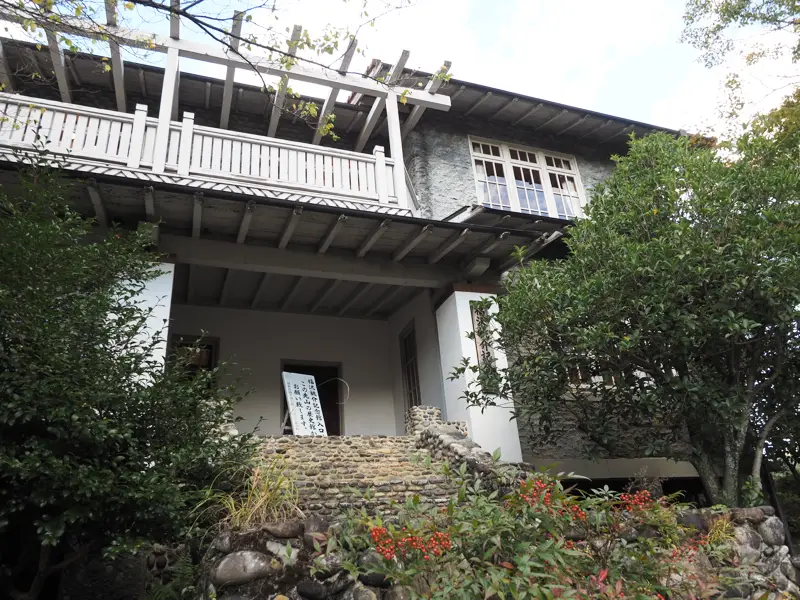
In front of the entrance, there is a sign that reads “To enter the memorial museum, please go to the Museum of History of Kiso Forestry". Maybe for safety reasons, they do not want tourists to walk these stairs.
Following the sign, I moved to the next building.
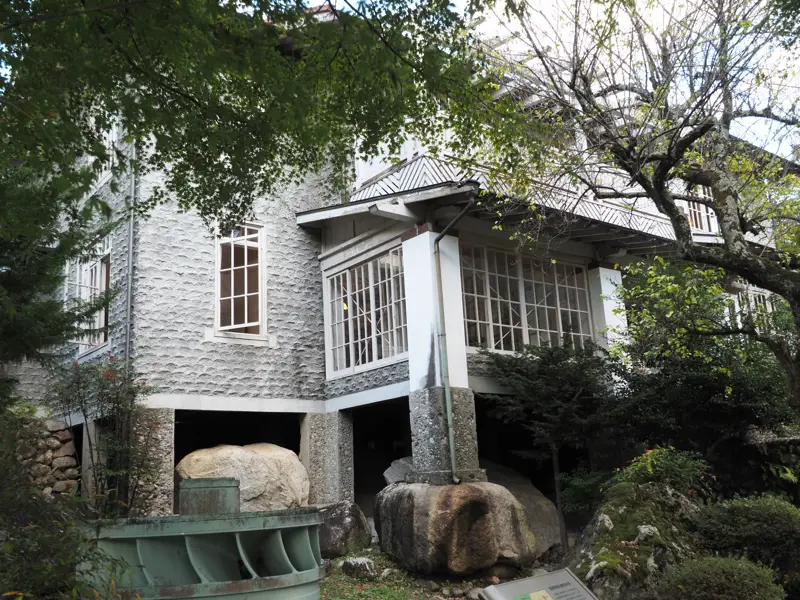
You can see how high the floor is in this picture. It seems that when the villa was built, the ground was not completely cleared and the building was constructed using the rocks that were there.
The light green object on the lower left is the water wheel of the generator used at the Yomikaki Power Station, which was in use until 1997.
By paying the admission fee once at the Museum of History, we can also visit the Momosuke Memorial Museum. The Memorial Museum can be accessed from the back of the Museum of History through a corridor.
After visiting the Museum of History, I walked along the corridor and entered the Memorial Museum. The corridor has stairs so it gave me the illusion that I entered in the second floor of the memorial museum, but it is the first floor because the floor is high.
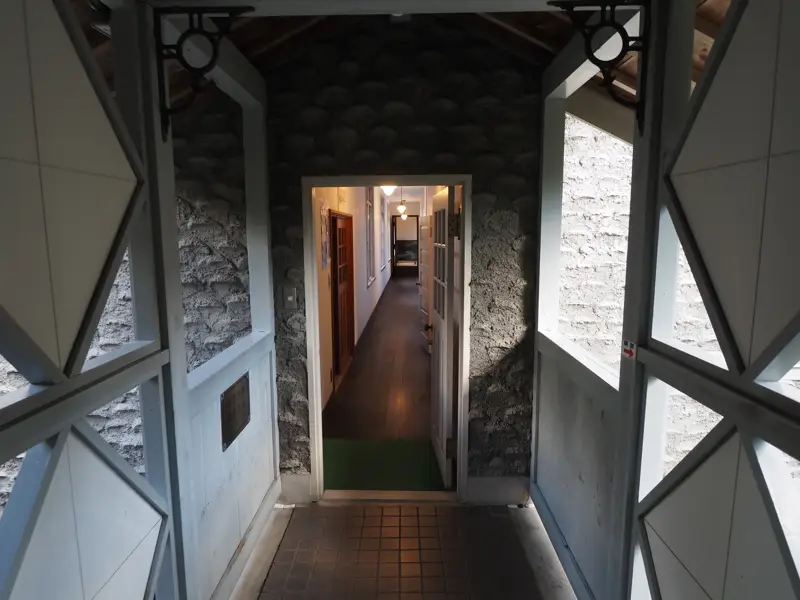
I learned from the exhibition materials that the second floor of the building was destroyed by fire on April 6, 1950.
The building was later converted to a one-story house and opened to the public as a memorial museum in 1985. In 1997, the building was restored to its original appearance in conjunction with the Tenpaku Park development project.
Therefore, the second floor of the building we are about to visit was reconstructed.
I have already started the topic with the fire, but the history of this building should be written from the beginning.
Momosuke Fukuzawa built this villa in 1919 when he built power stations in the Kiso-gawa River basin, and used it as a base to direct and supervise the construction.
His partner, actress Sadayakko Kawakami, also stayed here. The villa was not only a residence for them, but also a social gathering place for entertaining guests.
After the construction of the power station was completed, Momosuke and Sadayakko returned to Tokyo in 1924, and Daido Electric Power Company used the villa as company housing. The property was then transferred to Yomikaki Village, and from 1953 it was used as a high school teacher’s residence.
Then, in 1950, a fire destroyed the second floor.
I started my tour with the first floor. The bathroom was on the right.
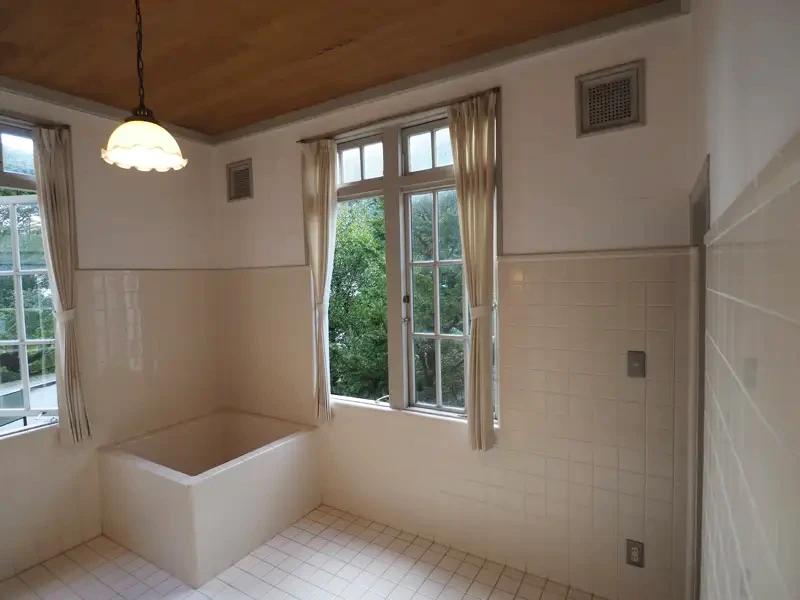
The sunroom on the south side. The entrance to the villa is visible behind the sunroom.
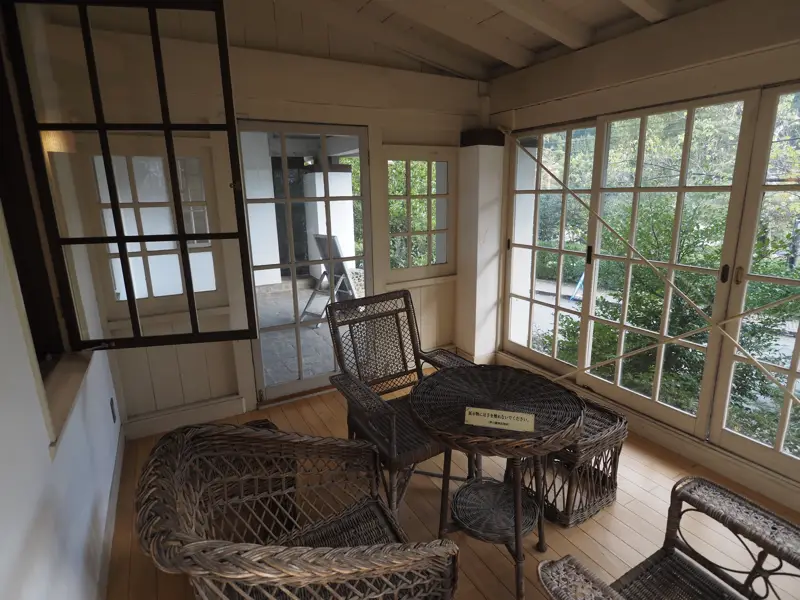
This should be the entrance hall.
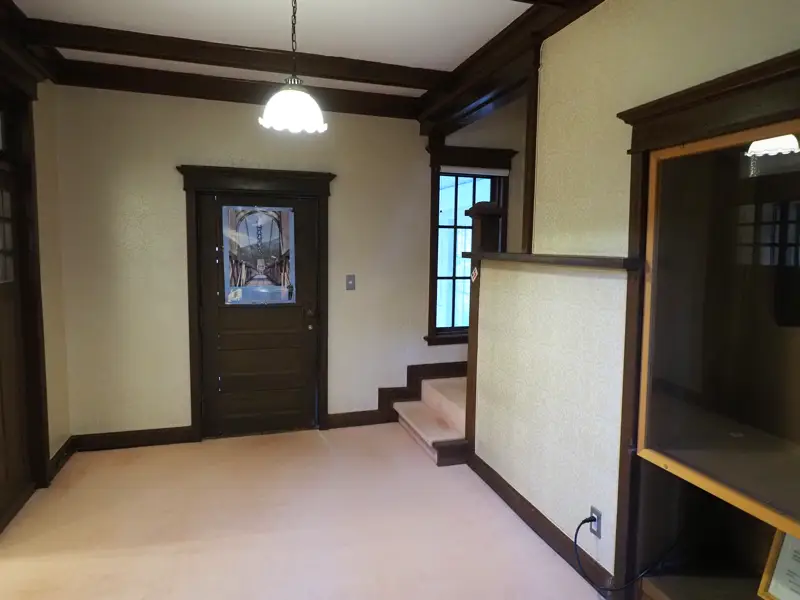
This is the room next to the entrance hall. There is a fireplace, so it was probably used as a living room or dining room. I think they entertained guests here.
The coat and silk hat on display were worn by Momosuke Fukuzawa.
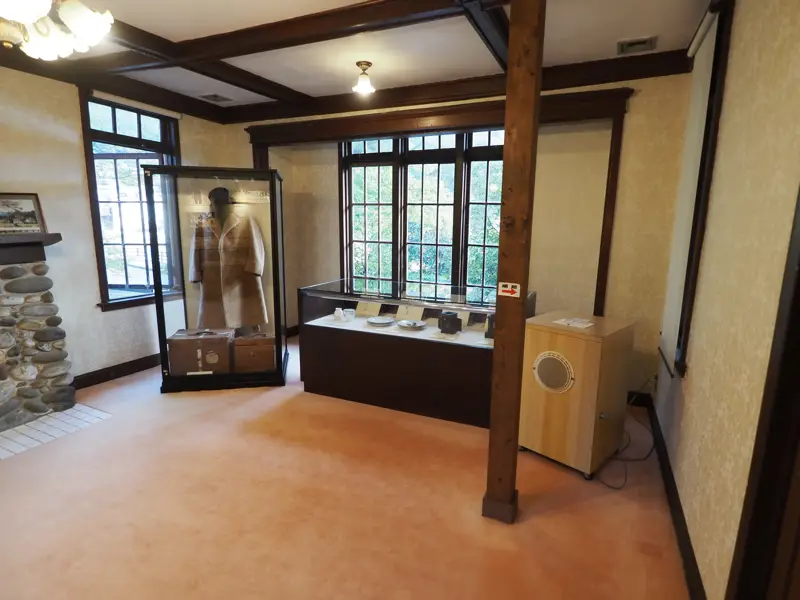
At the east end of the building was a four-and-a-half-tatami-mat Japanese-style room.
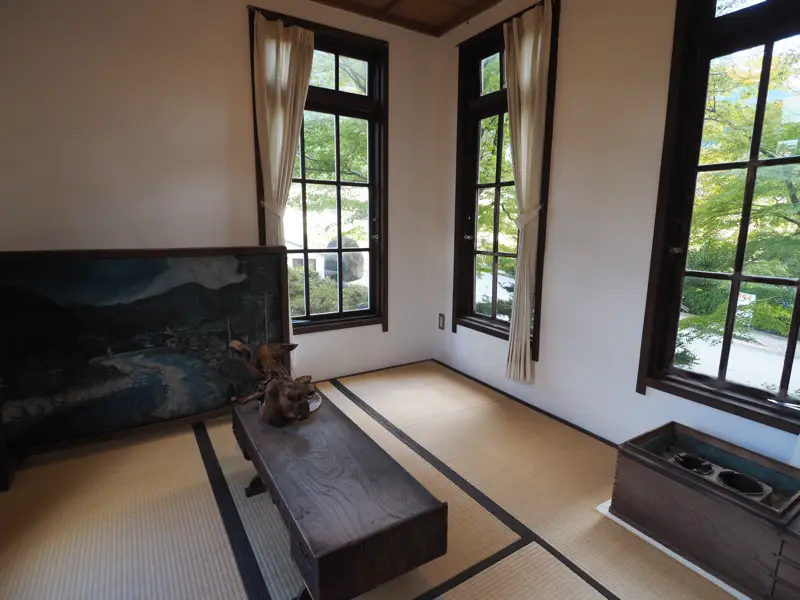
I went up to the second floor. As I mentioned earlier, the second floor was restored after it was destroyed by fire.
I did not look up the official name of the room, but this is a room like an observation room at the east end of the building. It is located directly above the Japanese-style room.
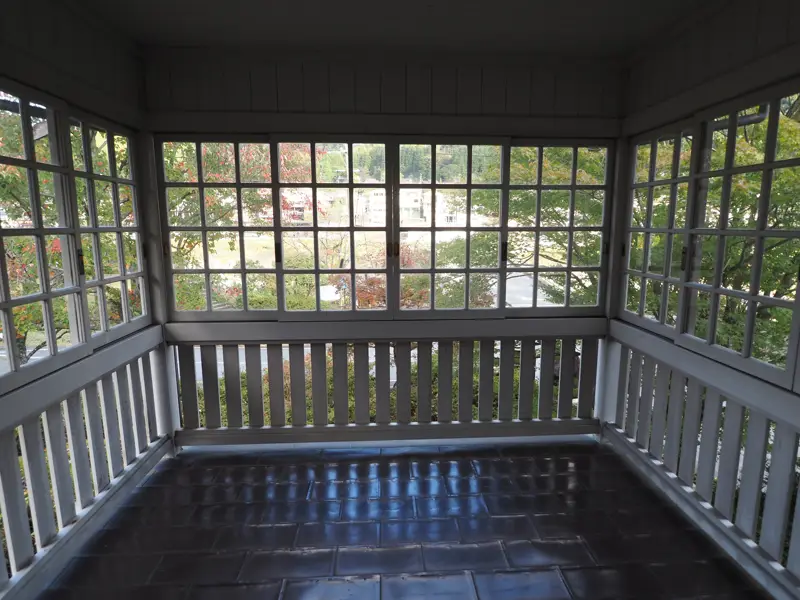
A room on the second floor. Photos of the construction of the Yomikaki Power Station are on display.
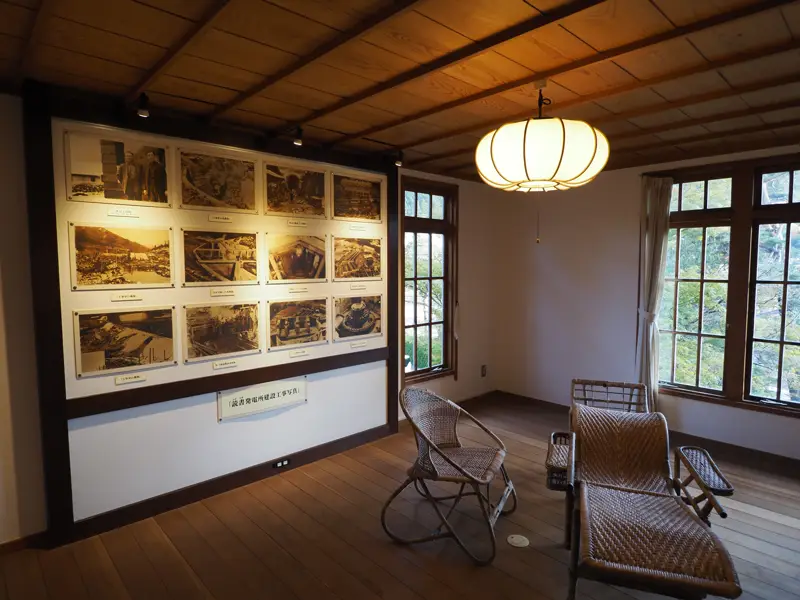
Materials are also displayed in the next room.
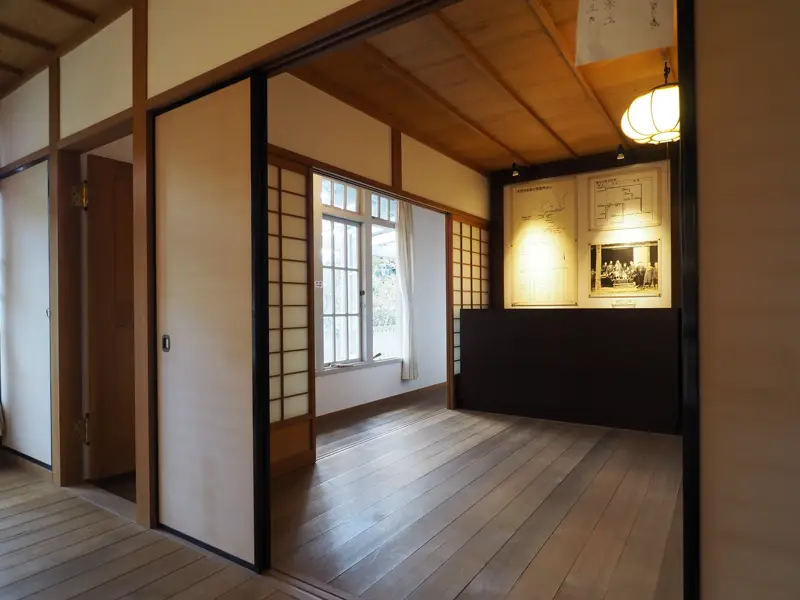
The balcony on the south side. There are rafters, but the roof has not been erected, so the floorboards may be easily damaged.
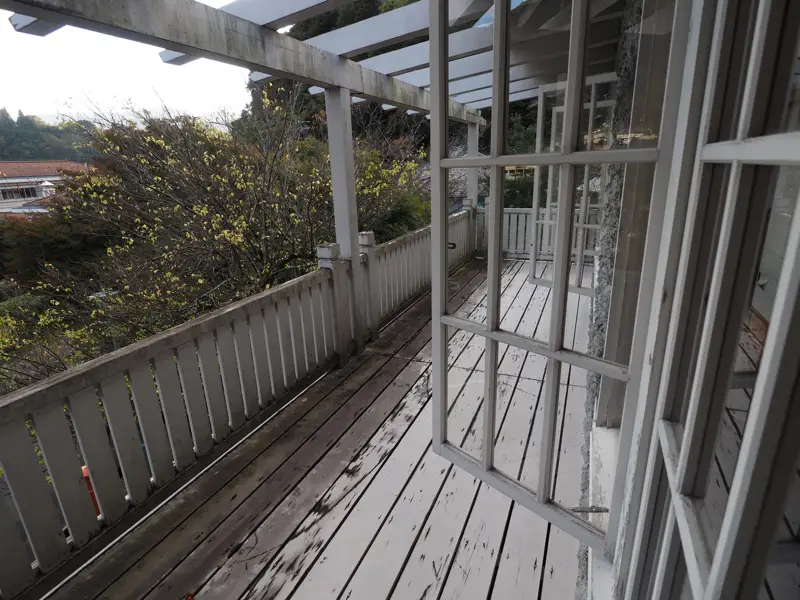
There was also an exhibit on the Momosuke-bashi Bridge.
The frame slightly visible in the lower left is a photo of the Momosuke-bashi Bridge before its restoration.
The bridge was in a state of disrepair and the floorboards had fallen off, and it was painful to see. I was glad to see it restored.
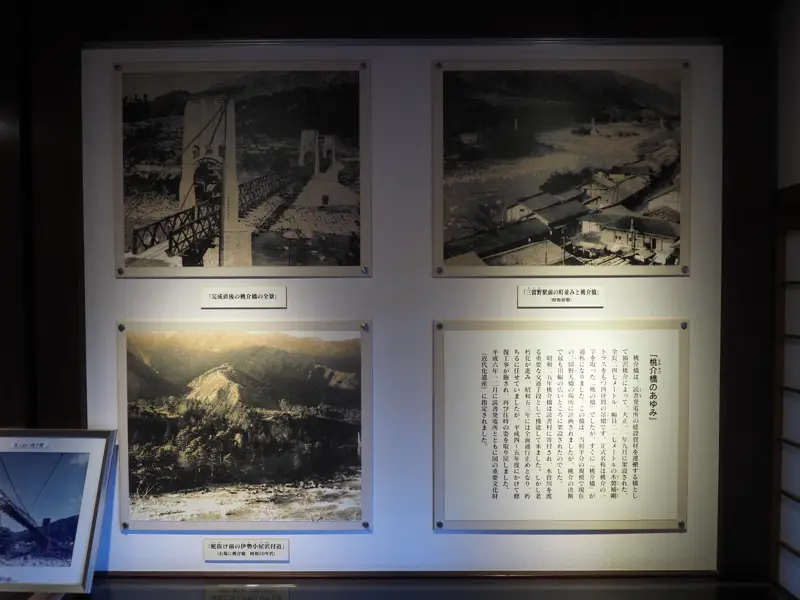
The outside of the building was photographed after the tour.
The chimney of the fireplace. The first floor to the right of the chimney is the Japanese-style room and the second floor is the observation room.
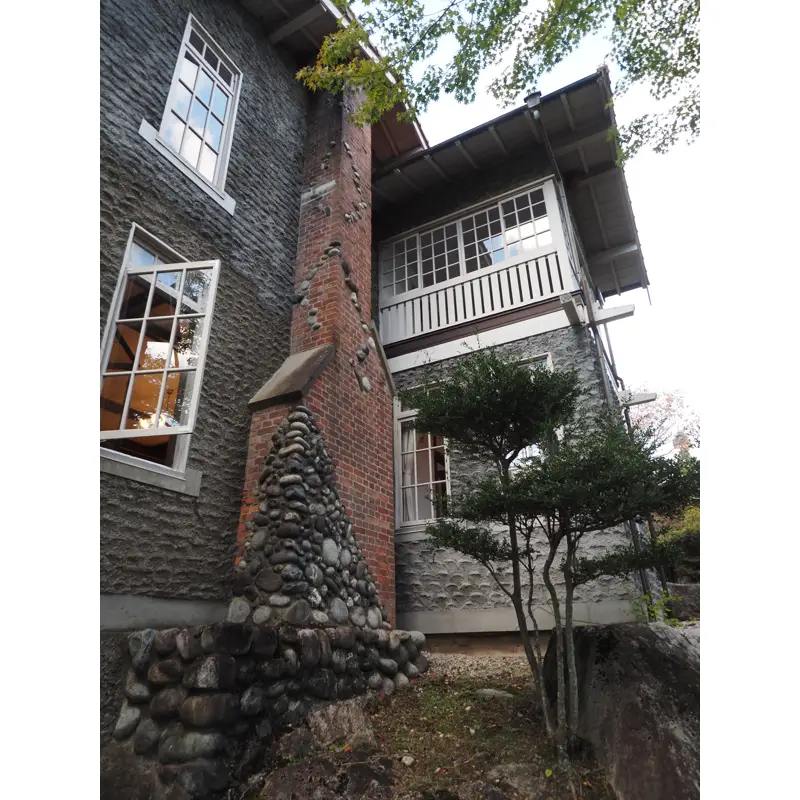
Finally, I went up the north slope to photograph the back side of the building.
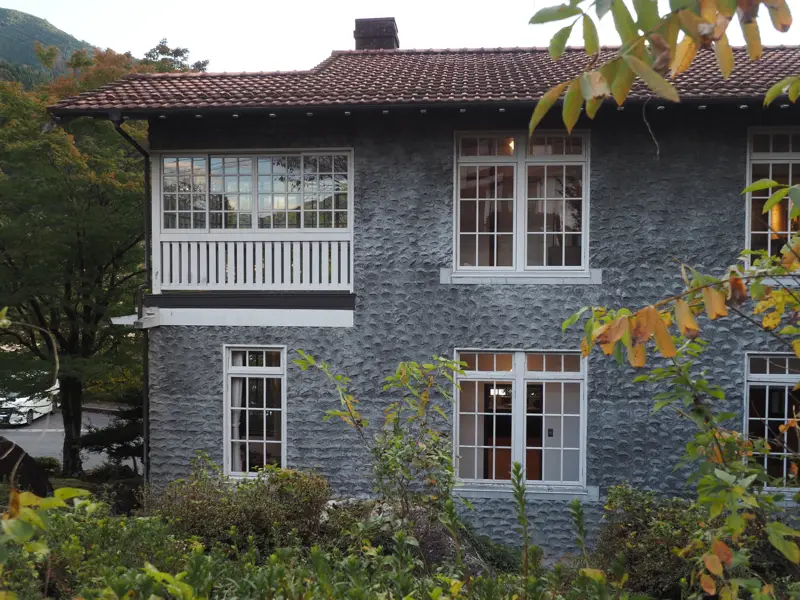
I did not ask for an explanation because I wanted to take pictures at my own pace, but the staff at the museums will give you an explanation, so it is a good idea to listen to their explanations as you visit.
The museum is open from April to November (this year the museum opened on March 25) and from 9:30 to 16:30.
The museum is closed on Wednesdays.
If you visit the museum by car, you can park for free in the Tenpaku Park parking lot.
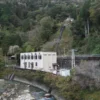
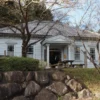

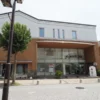
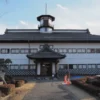
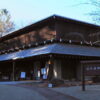
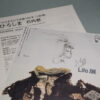
Discussion
New Comments
No comments yet. Be the first one!